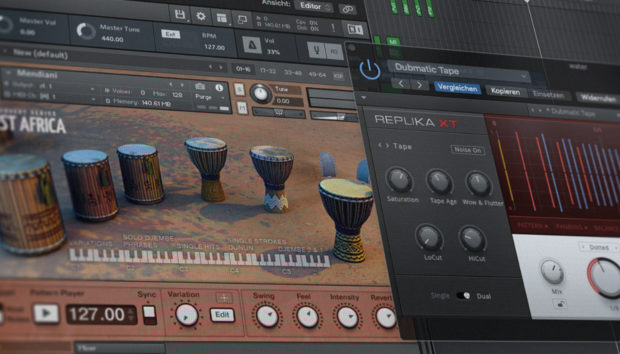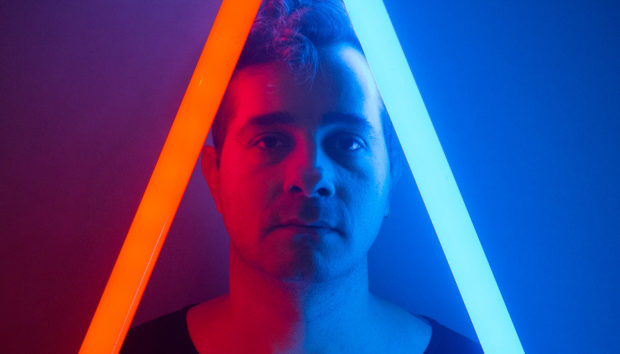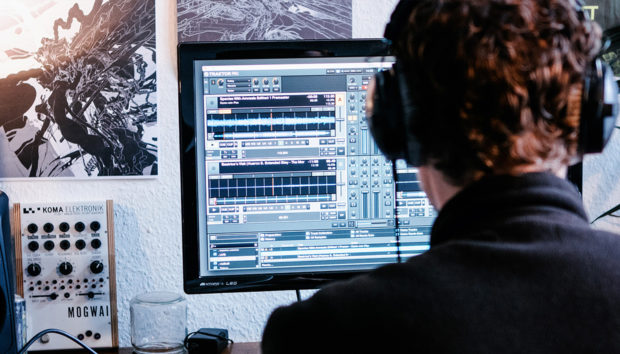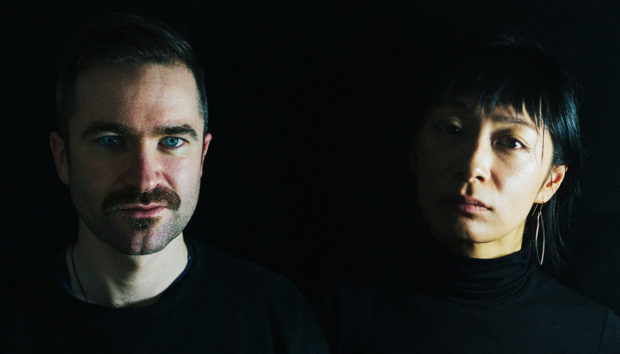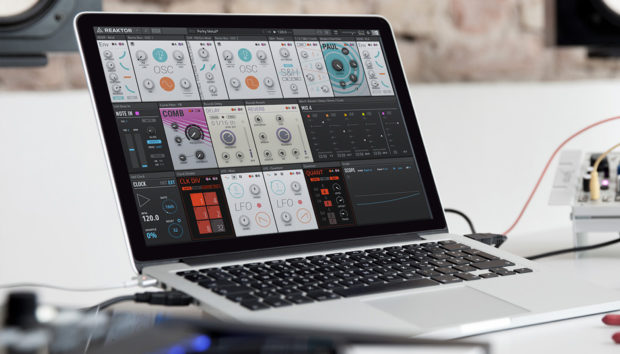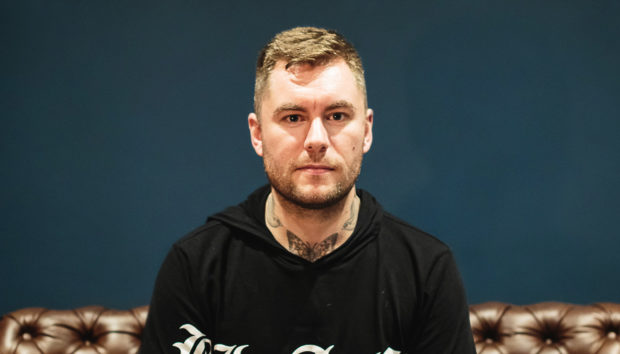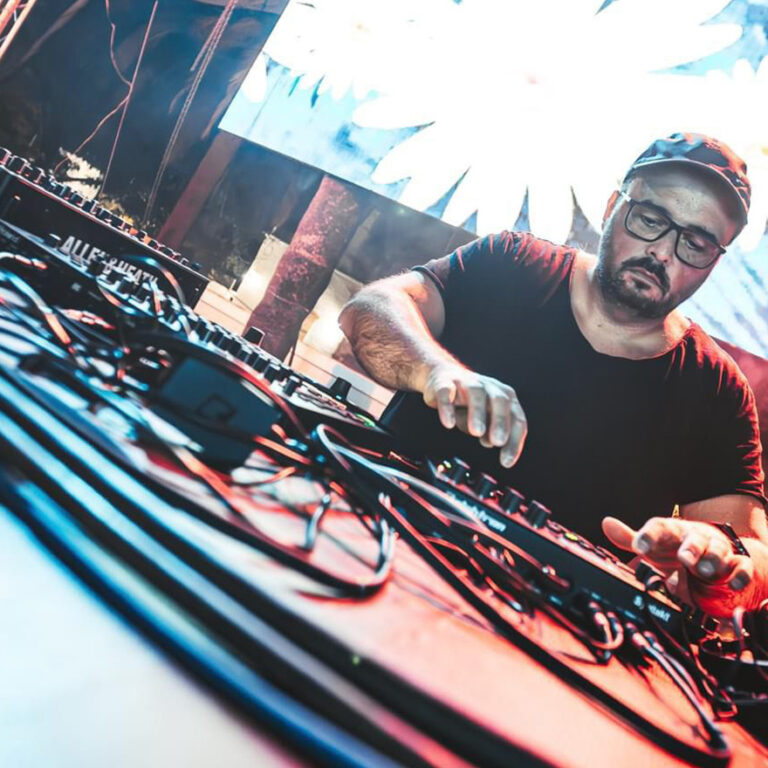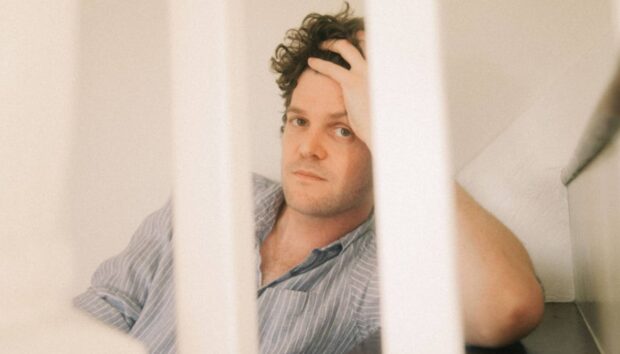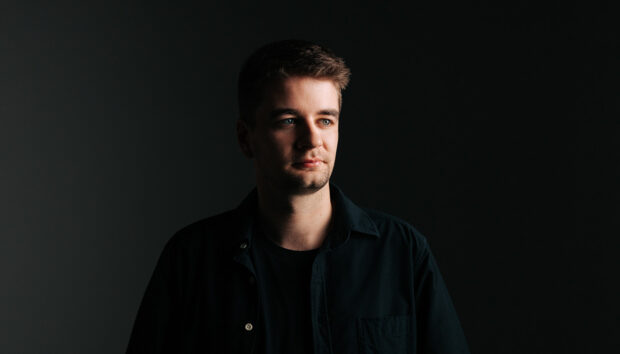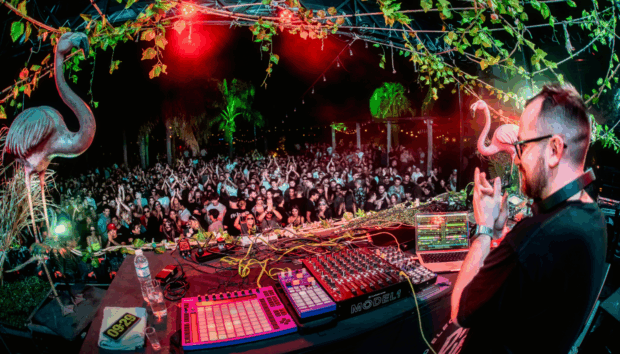Uruguayan-Catalan producer Fernando Lagreca has built a name across Europe’s underground for his melodic approach to techno and left-field club tracks. With the upcoming release of Cosmic Tide alongside Pedro Mercado on Chrom Recordings, he blends arpeggiated synths, atmospheric basslines, and modular textures into something functional yet emotionally resonant.
The title track’s foundation, which is a processed analog bass and layered Massive X arpeggio, offers a clear snapshot of Lagreca’s process: balancing tone, emotion, and studio pragmatism.
We caught up with him to celebrate the release of his EP, which dropped on August 8th, to discuss working efficiently with familiar tools, building a personal sound library, and the long-term benefits of learning Komplete inside and out.
Jump to these sections:
- Why tagging sounds improves creativity
- How Komplete Kontrol helps speed up tone hunting
- His take on signature sound and spontaneity
- Time-saving workflows across hardware and software
- His favorite Native Instruments plugins
- How layered synths shape “Cosmic Tide”
With a catalog that spans indie-disco, dark techno, and modular experimentation, Lagreca’s approach to Native Instruments tools is grounded, flexible, and highly personal.
When you revisit a Komplete patch from an old project, what’s your first instinct: tweak it, resample it, or leave it untouched?

Good question. I work a lot with Favorites. Sometimes I’ll spend a whole afternoon just classifying sounds – I love that part of the process. It’s playful and often very inspiring. I do this with both software and hardware. Every month or two, I try to schedule time in the studio just to dig through sounds and tag my go-to patches. With Komplete Kontrol, this is super intuitive thanks to the audio preview function in the browser.
Once I’ve built a solid collection of favorites, I reuse them across projects, always adding a unique twist. I rarely use a preset straight out of the box – I’ll tweak parameters, add LFOs, adjust oscillators, and more. The only exception might be when working with sample-based or percussive libraries, where the need for modification is often minimal.
Of course, it also depends on the nature of the project, my mood that day in the studio, or whether I’m producing something specific like a soundtrack or a remix.
Pro Tip: Dedicate some time every few weeks to curate and tag sounds. Over time, you’ll build a personal library that will streamline your workflow and help you avoid getting lost in the massive universe of sounds at your fingertips.
You’ve mentioned using Komplete 15 fluently in your sessions. What role do saved presets play when you’re chasing a specific tone or mood?
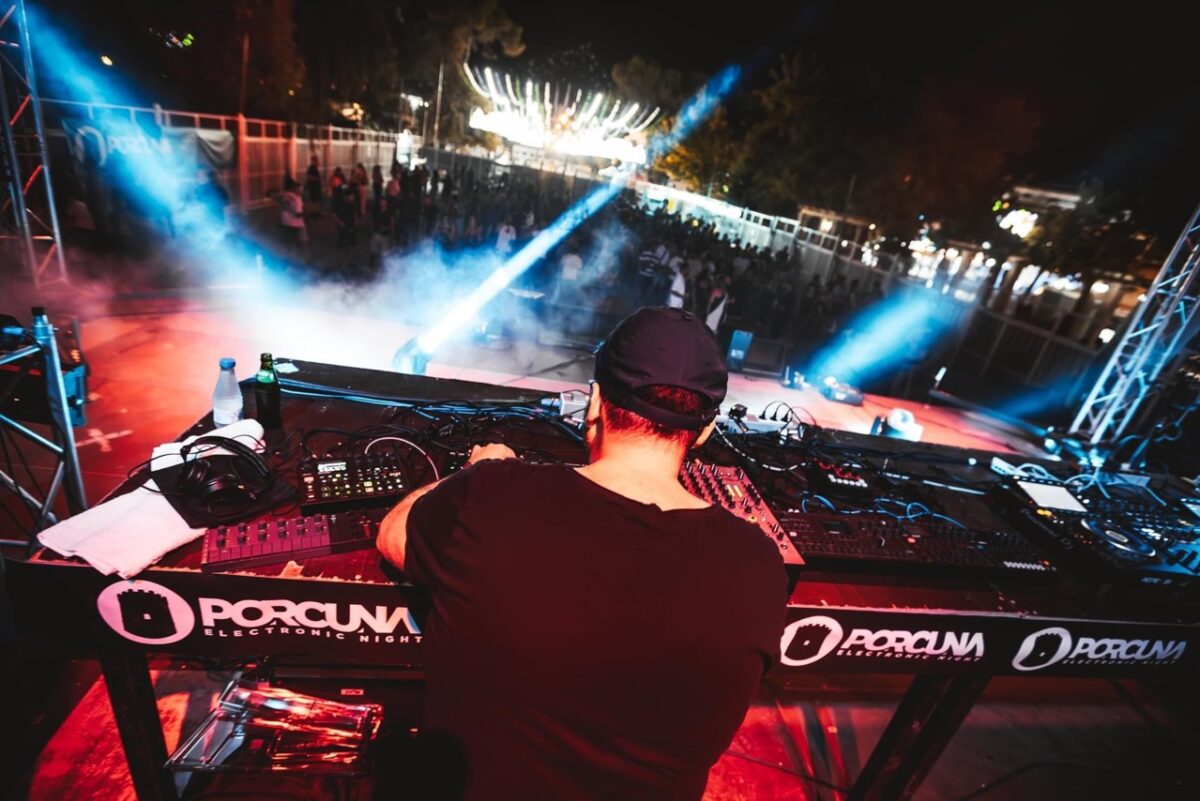
I’ve been using Komplete in the studio for 4 or 5 years now.
There was a period when I moved away from plugins and focused entirely on hardware – mainly because I was performing live sets with an all-hardware setup. It was exciting to go fully out of the box.
But during the pandemic, I took the time to rediscover software synths. Since I’ve always been a fan of Native Instruments (my first plugins were FM8 and Absynth), Komplete was a natural choice.
When I’m chasing a particular tone, saved presets are a huge help. The tagging system in Komplete makes it easy to filter sounds by type or character. Early on, I’d go straight to the synth I thought would give me what I wanted: FM8 for FM tones, Monark for Moog-style basses, etc. But after a while, I realized the real power is in Komplete Kontrol – having access to all presets from every synth in one unified browser. It’s fast and surprisingly inspiring.
Pro Tip: Using tags and presets in Komplete Kontrol can spark ideas just by browsing. Sometimes the best sounds are the ones you didn’t know you were looking for.
How much of the continuity in your sound is intentional, and how much comes from working fast with familiar tools?
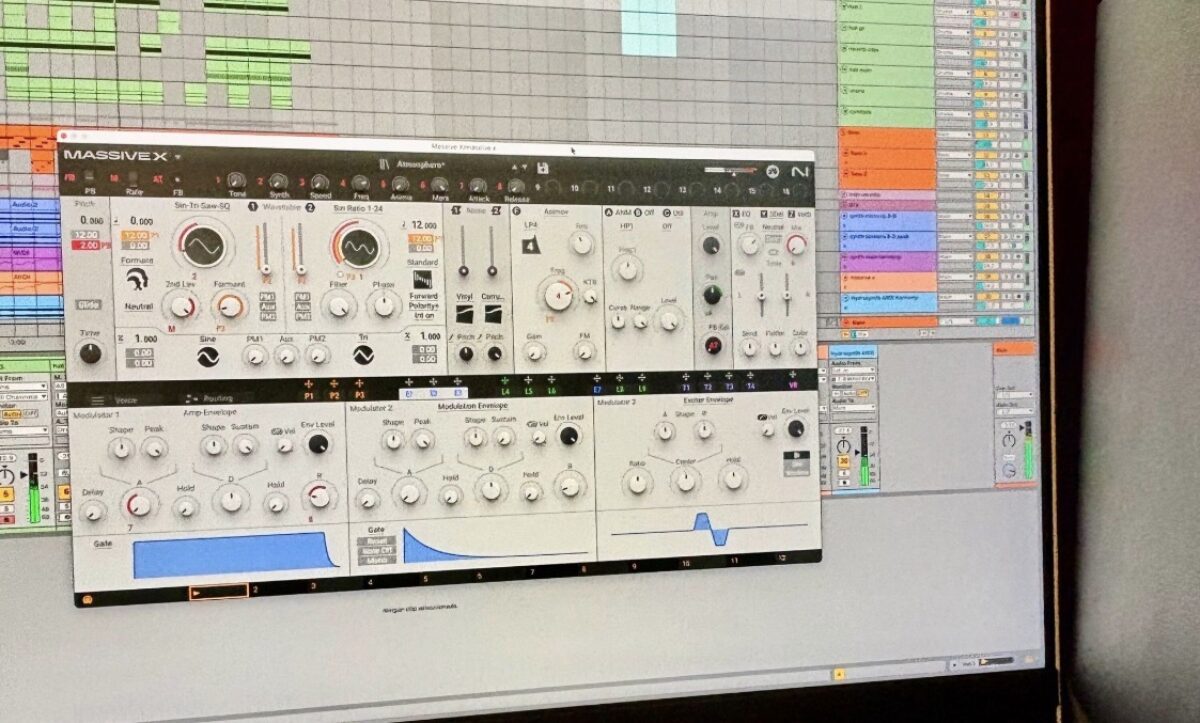
I’d say it’s a 50/50 split. On one hand, I value spontaneity and improvisation, but on the other, having a set of tools I know inside out helps me move fast and stay creative.
I think having a signature sound comes from both intention and workflow habits. It’s not just about reusing patches – it’s also about gravitating toward particular chord progressions, arpeggios, or harmonies that make your work feel like you, no matter the sound source.Rhythmically, I do something similar. I have different snare libraries for genres like indie dance or dark disco, and another set for techno or more peak-time tracks. Even when reusing samples, I’ll tweak them – or not – depending on the vibe.
In terms of beat structures, I tend to treat the kick and snare as a stable base, like a template. The creativity comes more in the hats, percs, and details. But even then, I make sure every element is tuned and balanced in the mix, so the track carries some of my sonic fingerprint.
Pro Tip: Don’t stress about finding your signature sound overnight. It’s a process that comes from getting to know your tools and following your instincts in the studio. The more you enjoy the process, the more natural and authentic your sound will become.
How much time do you spend sound designing versus pulling from your own saved library?

When I get a new hardware synth, I usually dedicate the first 2 to 3 weeks to diving deep – learning its architecture, trying the presets, and building my own. The complexity of the machine (routing, modulation, sound palette) obviously plays a role.
With software, it’s a different story. Preset browsing alone can take a lot of time, and sound design can be nearly endless. So there’s no fixed percentage of how much time I spend designing versus selecting. But as you build your own library over the years, that naturally shifts. You rely more on your existing sounds and spend less time designing from scratch.
For me personally, it also depends on availability. I run a management and booking agency (Miracle MGMT), teach music business, run a label, and produce and perform – so time in the studio is precious. Still, I really enjoy creating my own sounds, even if it’s just modifying factory presets or sculpting something from a sine wave.
Pro Tip: Time spent designing sounds is never wasted. You’re investing in your artistic identity. Just don’t get stuck in perfectionism. Finding a balance between creating your own tones and using presets with your own twist is the key.
Are there instruments in Komplete that lend themselves to long-term evolution – ones that grow with you?
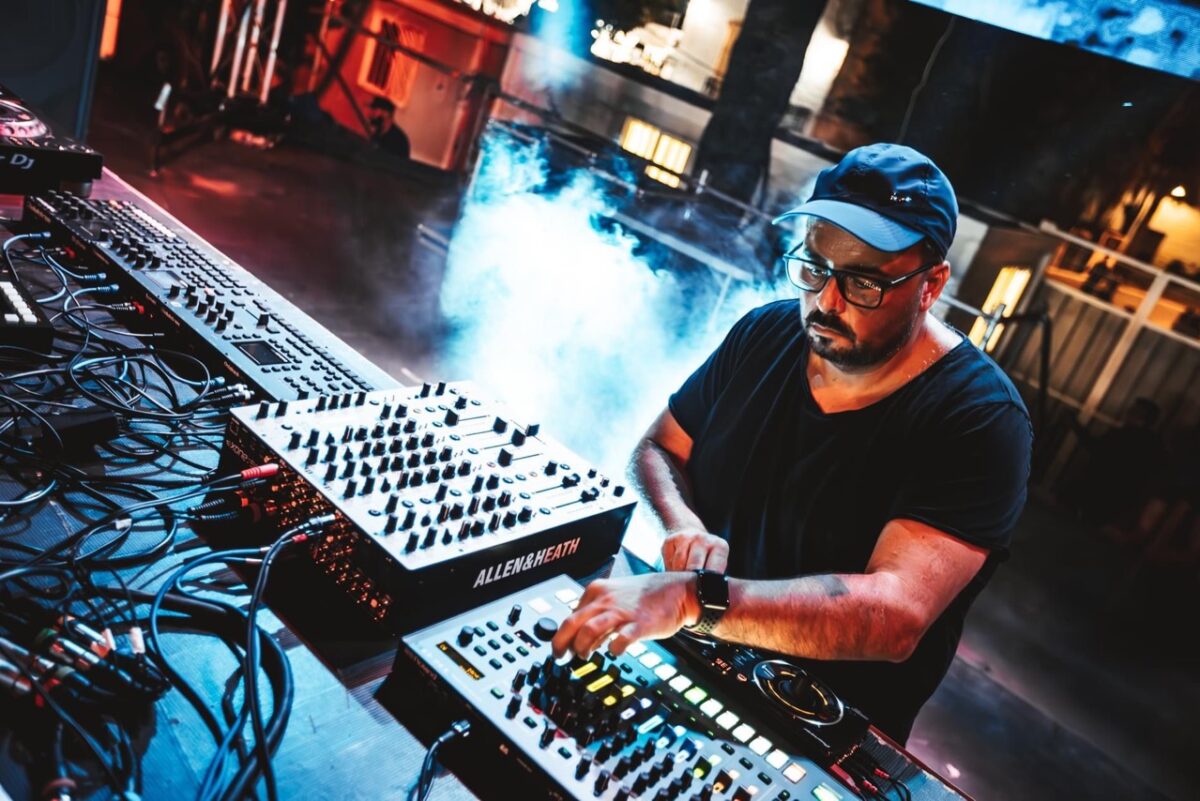
Definitely. Absynth and FM8 were foundational for me in earlier versions of Komplete. I also spent hours in Reaktor, exploring complex patterns and sequences – the factory library alone is amazing.
In more recent years, I’ve become a huge fan of Massive, especially Massive X, which is a beast. Its visual layout and intuitive structure make it more accessible than Absynth or Reaktor, but it still offers serious depth. It’s a powerhouse that works in almost any modern production.
Another standout is Guitar Rig. I’ve been using it for years. It’s incredibly flexible. You can recreate nearly any guitar or bass pedal setup, and if the sound’s not already in the presets, you can build it from scratch with ease.
Special mention goes to Replika, one of the best delay plugins out there. The XT version is a must-have for every studio.
Pro Tip: When exploring a large suite like Komplete, start by focusing on 6 to 7 instruments. Group them by category – bass, leads, synths, FX, etc. Pick two from each category and go deep. You’ll have a broad enough palette to build full tracks and a strong foundation to expand from.
When you listen back to Cosmic Tide, what’s the sound that anchors the record for you?
The core of Cosmic Tide is a combination of a pad plus a gritty “Anyma-style” bass stab, created with the Moog Sub 37 and processed through Replika Delay. That tone defines the mood of the whole track.
From there, I layered three more synths: a bell-like arpeggio from Massive X, plus textures from the Hydrasynth and Novation Peak. Layering is crucial for me, especially for lead synths, as it helps create a unique, complex tone. Of course, this means extra work in the mix: balancing EQ, panning, levels – all to ensure each layer has its own space and purpose.
Pro Tip: When layering, start with low-end-heavy tones and build upward. Clean up the lows before adding the next element. Don’t just copy-paste MIDI. Try detuning, adding movement with LFOs, or ultra-panning high frequencies to make your composite sound feel alive.
Wrapping it all up

Thanks to Fernando Lagreca for sharing his insights ahead of Cosmic Tide’s release.
His methodical approach to Komplete and hardware, combined with a steady dose of improvisation, shows how signature sounds emerge not from gear alone but from consistent habits and curiosity. As Chrom Recordings continues to develop and expand its melodic-meets-dark-disco soul and vibe, Lagreca’s contributions remain dialed in, balanced, and unmistakably his.
